NEWS
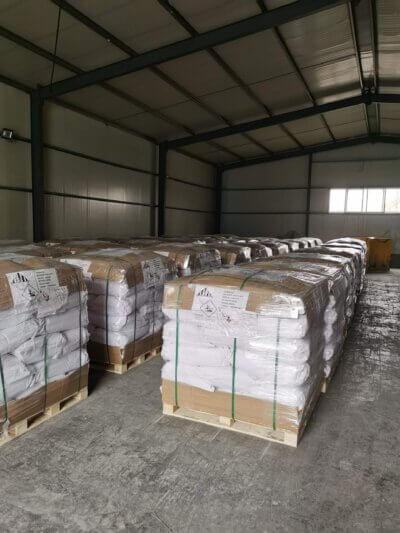
ZINC BORATE
Zinc borate is primarily used asa flameretardant in plastics and cellulosefibers,paper,rubbers and textiles. It is also used in paints,adhesives, and pigments. As a flame retardant, it can replace antimony(III) oxide as a synergist in both halogen-based and halogen-free systems.It is an anti-dripping and char-promoting agent, and suppresses the afterglow. In electrical insulator plastics it suppresses arcing and tracking.
In halogen-containing systems, zinc borate is used together with antimony trioxide and alumina trihydrate.It catalyzes formation of char and creates a protective layer of glass. Zinc catalyzes the release of halogens by forming zinc halides and zinc oxyhalides.
In halogen-free system, zinc borate can be used together with alumina trihydrate, magnesium hydroxide, red phosphorus, or ammonium polyphosphate. During burning the plastics, a porous borate ceramics is formed that protects the underlying layers. In presence of silica, borosilicate glass can be formed at plastic burning temperatures.
Zinc borate is used in polyvinyl chloride, polyolefins, polyamides, epoxy resins, polyesters, thermoplastic elastomers, rubbers, etc. It is also used in some intumescent systems.
Zinc borate has synergistic effect with zinc phosphate or barium borate as a corrosion inhibitor pigment.
Zinc borate acts as a broad-spectrum fungicide in plastics and wood products.
APPLICATIONS OF ZINC BORATE FLAME RETARDANT
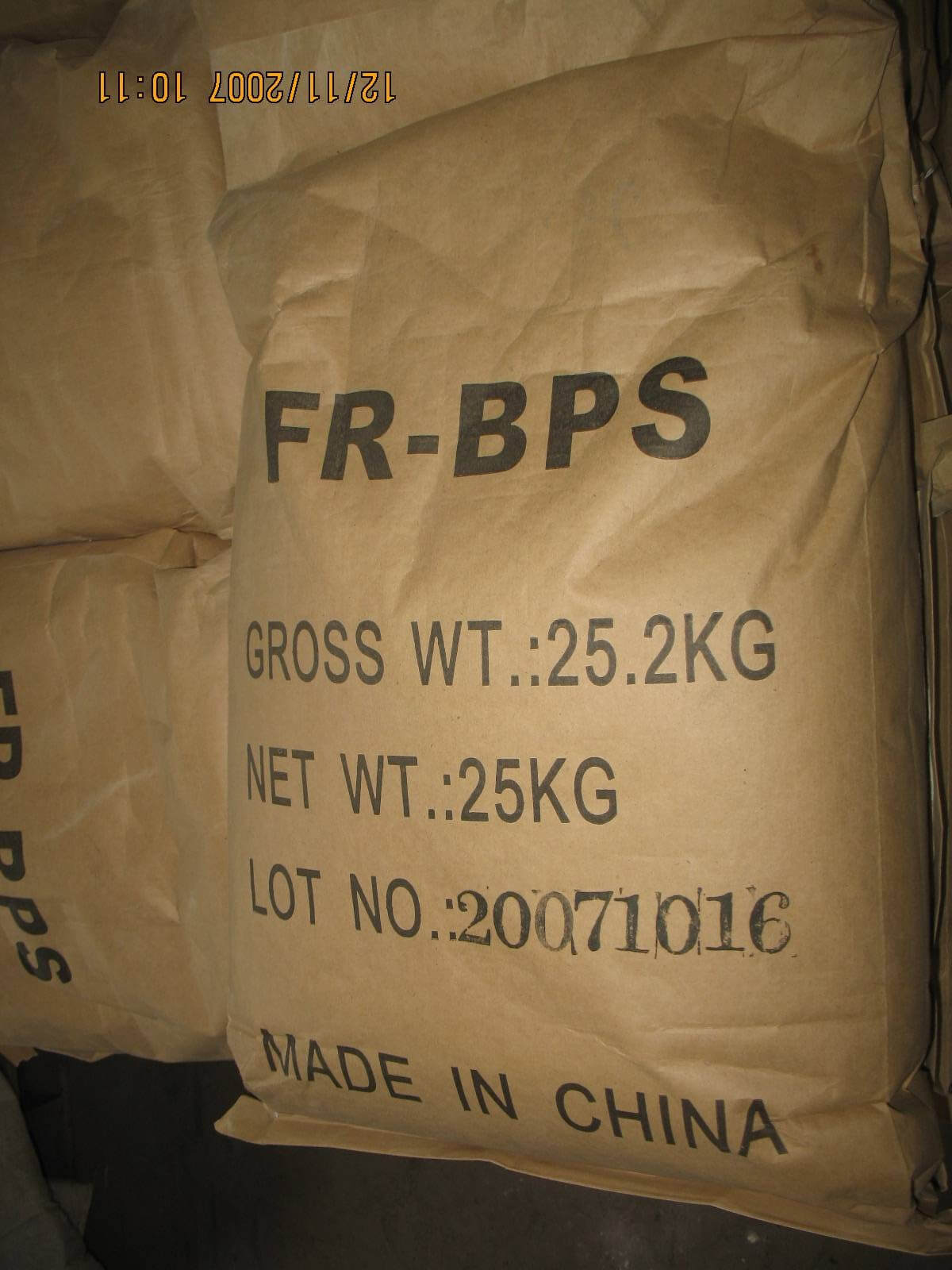
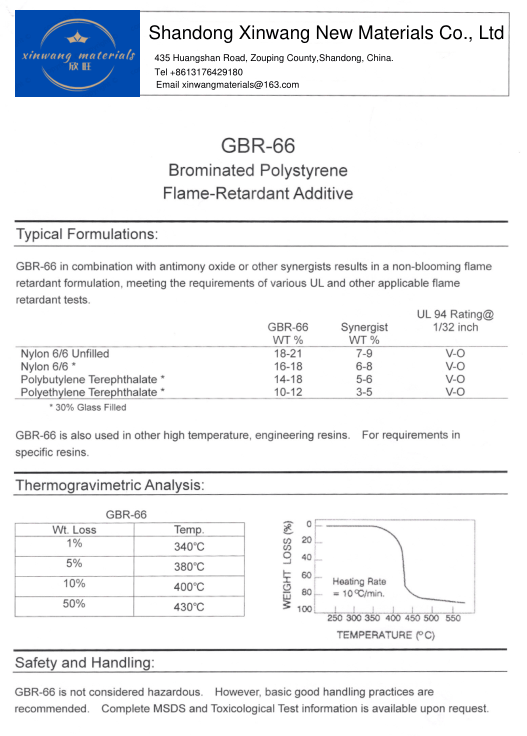
BROMINATED POLYSTYRENE
Brominated polystyrene (abbreviated as BPS) is a brominated organic flame retardant with good mechanical, physical and chemical properties such as high flame retardancy, thermal stability and light stability. It is widely used in polybutylene terephthalate Engineering plastics such as glycol ester, polyethylene terephthalate, polyphenylene ether, nylon-66, etc.
APPLICATION OF BROMINATED POLYSTYRENE
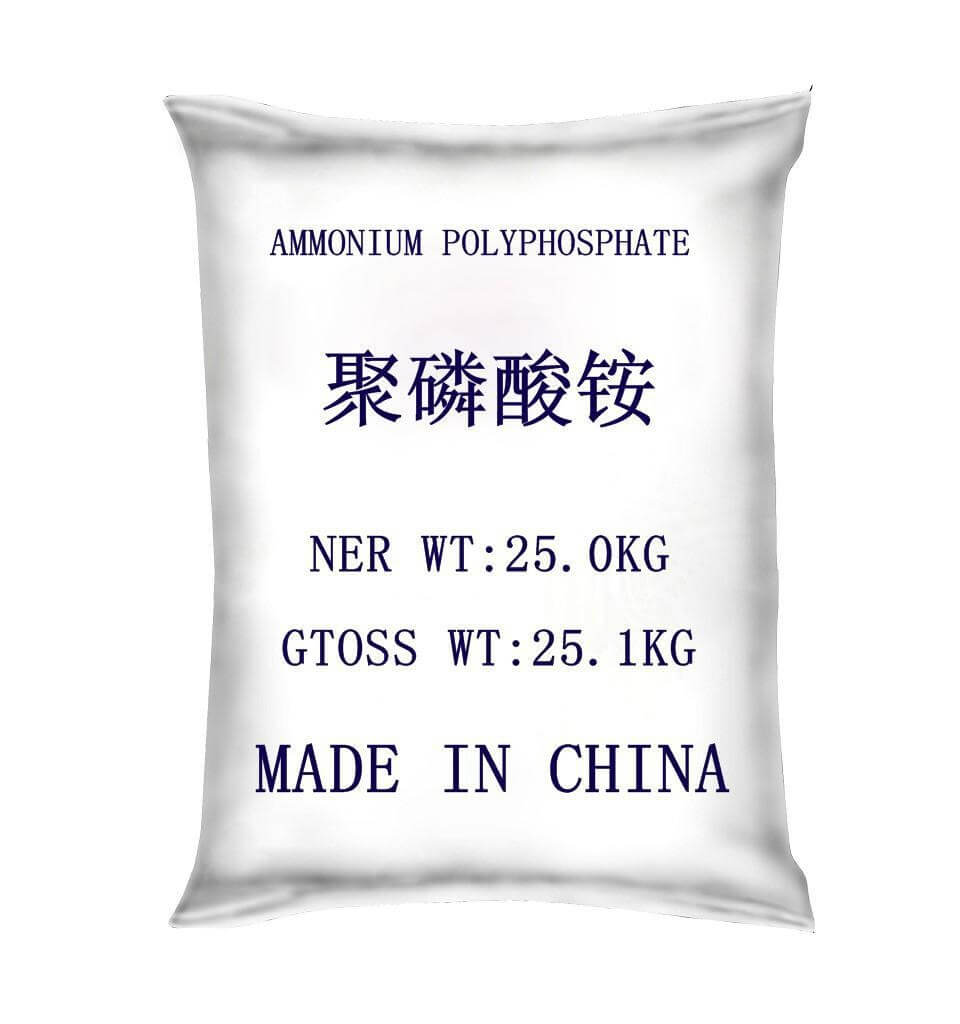
AMMONIUM POLYPHOSPHATE
Ammonium polyphosphate is an inorganic salt of polyphosphoric acid and ammonia. The chain length (n) of this polymeric compound is both variable and branched, and can be greater than 1 000. Short and linear chain APPs (n < 100) are more water sensitive (hydrolysis) and less thermally stable than longer chain APPs (n >1000), which show a very low water solubility (< 0.1 g/ 100 ml).
Chemical Formula and structure: [NH4 PO3]n
APP is a stable, non-volatile compound. In contact with water APP it slowly gets hydrolysed to monoammonium phosphate (orthophosphate). Higher temperatures and prolonged exposure to water will accelerate the hydrolysis. Long chain APP starts to decompose at temperatures above 300 °C to polyphosphoric acid and ammonia. Short chain APP will begin to decompose at temperatures above 150 °C.
There are two main families of ammonium polyphosphate : Crystal phase I APP (APP I) and Crystal phase II APP (APP II).
Crystal phase I APP (APP I) is characterized by a variable linear chain length, showing a lower decomposition temperature (aprox 150°C) and a higher water solubility than Crystal Phase II Ammonium Polyphosphate. The general structure of APP is given below.
In APP I, n (number of phosphate units) is generally lower than 100.
Crystal phase II APP (APP II)
As shown below, APP II structure is cross linked/branched. The molecular weight is much higher than APP I with “n” value higher than 1000. APP II has a higher thermal stability (decomposition starts at approximately 300°C) and lower water solubility than APP I.
Coating with different additives will modify the properties of Phase II Ammonium Polyphosphate, making them suitable for use in many applications.
Ammonium polyphosphate acts as a flame retardant by a chemical effect in the condensed phase called “Intumescence”
When plastic or other materials which contain APP are exposed to an accidental fire or heat, the flame retardant starts to decompose, commonly into polymeric phosphoric acid and ammonia. The polyphosphoric acid reacts with hydroxyl or other groups of a synergist to a non stable phosphate ester. In the next step the dehydration of the phosphate ester follows. A carbon foam is built up on the surface against the heat source (charring). The carbon barrier acts as an insulation layer, preventing further decomposition of the material.
Ammonium polyphosphate is a non-reactive, inorganic material, that is compatible with many polymers. However, as indicated under “thermal stability”, the processing temperatures limit the application of APP. The maximum processing temperature is 230°C. Also the APP should not be processed under pH >7, because ammonia will be released. Depending on the coating, the APP can have different pH values between 5-8. For pH sensitive application our melamine coated products can be used. Although APP II (FR has a very low water solubility (< 0,5 g/100 ml), in certain applications an even lower solubility is demanded. Different Coatings of APP can achieve lower water solubilities and a better durability under humid conditions. The FR performance is not affected by the coating. Ammonium polyphosphate Phase II has a good thermal stability > 300°C However, in combination with other chemicals (e.g. char promoter, blowing agent in intumescent mixtures) and under the mechanical stress and shear during extrusion, APP is limited to processing temperatures between 190 and 210°C. Under too drastic conditions decomposition of the APP will occur with the smell of ammonia. However, temperatures for the extrusion of PP/PE are well suited to the processing window of Ammonium Polyphosphate. With a loading of 18-25% of an APP based intumescent mixture, a V0 (UL 94, 1,6 mm) and thicknesses of 0.8mm can be achieved.
APPLICATION OF AMMONIUM POLYPHOSPHATE
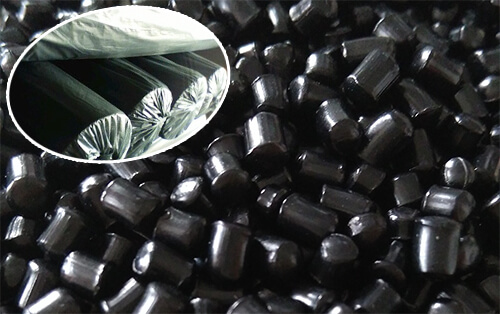
Black masterbatch
HDPE pipe with black masterbatch
HDPE drainage pipe black masterbatch
Black masterbatch with garbage bag
Black masterbatch with drip irrigation
Universal vector EVA black masterbatch
Black masterbatch for cable sheath
Black plastic film in black masterbatch
Black masterbatch with geomembrane
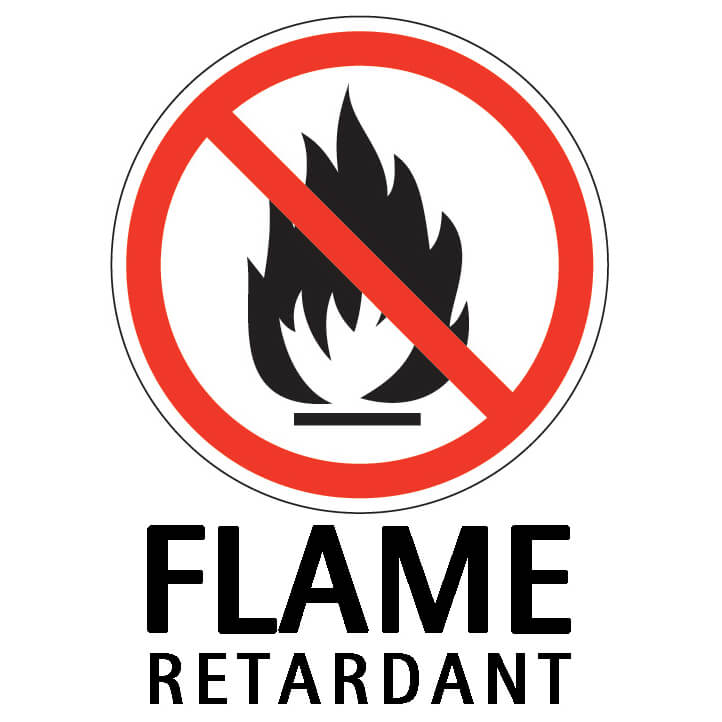
DBDPE
Decabromodiphenyl ethane is a broad-spectrum additive flame retardant with a wide range of applications. It has high bromine content, good thermal stability, good UV resistance, and has lower exudation than other brominated flame retardants; especially It is suitable for the production of high-grade materials such as computers, fax machines, telephones, copiers, and home appliances.
Introduction
Decabromodiphenylethane is a broad-spectrum additive flame retardant with a wide range of applications. It has high bromine content, good thermal stability, good UV resistance, and has lower exudation than other brominated flame retardants; especially It is suitable for the production of high-grade materials such as computers, fax machines, telephones, copiers, and home appliances.
Decabromodiphenylethane does not produce toxic polybrominated dibenzodioxane (PBDO) and polybrominated dibenzofuran (PBDF) during thermal cracking or combustion. Its flame retardant materials are in full compliance with European regulations on The requirements of the Evil British Regulations do not cause harm to the environment.
Decabromodiphenyl ethane is not toxic, does not cause any teratogenicity to organisms, and has no side effects on aquatic organisms such as fish. It can be said to meet the requirements of environmental protection.
Decabromodiphenylethane is quite stable in the system used, and the flame-retardant thermoplastics can be recycled.
Decabromodiphenylethane has less adverse effect on the performance of flame retardant materials than the traditional flame retardant decabromodiphenyl ether, and has good light resistance and low exudation.
Product Specification
Appearance White powder Water content,% (m/m) ≤ 0.1
Total bromine content,% (m/m) ≥ 82.3 free bromine, (ppm) ≤ 20
Whiteness ≥ 83.5 average particle size, um≤ 5
Melting point, ℃≥ 345
Recommended dosage recommended dosage of decabromodiphenyl ethane flame retardant
Flame-retardant polymer The amount of decabromodiphenyl ethane The amount of antimony trioxide Material flame retardant level UL94
(1.6mm)
PP+14% Talc 22 6 V-0
HIPS 12 4 V-0
ABS 15 4 V-0
PS 14 5 V-0
PBT 10 5 V-0
Thermoplastic elastomer 18 9 V-0
XLPE 21 7 V-0
Thermosetting EP 6 3 V-0
LDPE 6 2 ――
Application
Decabromodiphenyl ethane is a new, broad-spectrum, high-efficiency and environmentally friendly additive flame retardant developed and produced in recent years. Its heat resistance, light resistance and non-dialysis are superior to decabromodiphenyl ether. , The flame retardancy of the two is basically the same, but it will not cause the problem of polybrominated dioxins that people are worried about when flame retardant, and the toxicity is lower than that of decabromodiphenyl ether. Although decabromodiphenyl ether was exempted in October 2005, it does not rule out the possibility of being banned from production and use more than ten years later. Therefore, decabromodiphenyl ethane is an excellent choice for decabromodiphenyl ether. substitute. Decabromodiphenyl ethane is suitable for polystyrene, high styrene, ABS, epoxy resin, elastomer and other adhesives and sealants.
APPLICATION OF DBDPE
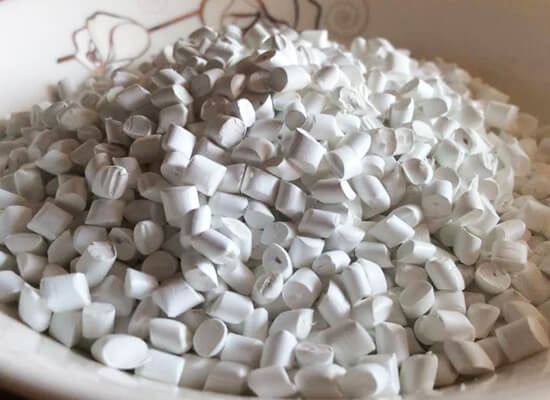
White masterbatch
More Than a Color
White MB are used in a wide range of applications, including lamination, extrusion coating, protective films, fibers and non-woven, and injection molding – and we provide them all.
Using our extensive knowledge and state-of-the-art production capabilities, we are able to produce high-quality MB containing different outdoor and indoor TiO2 grades, sourced from top producers around the world. By combining the right TiO2 grade, carrier resin, stabilizers and process equipment, we provide the highest-quality MB for each application.
